Back to Don's Maps
Cycling down the Danube
Day 15, 15th September 2008

From Sankt Nikola an der Donau to Willendorf in der Wachau 52 km (800.4 km from start)
Photo: Google maps

Panoramic view from the site of the discovery of the Venus of Willendorf, Willendorf II. The Venusium museum is the red walled, dark tiled roof structure below the railway track on the right.
Photo: Don & Maria Hitchcock 15th September 2008
From Maria's Diary:
It rained all night and was still raining the next morning. We had breakfast at the Gasthaus then packed and set off along the road again.
The track was very good for most of the way - hot tar surfaces and an excellent Treppelweg. Despite the rain we made excellent time riding on the left bank through Hirschenau and then Weins.
We were amazed at the stockpile of logs each cut an equal size and stacked beside the rail line. Near Weins the Radweg went over a timber jetty which jutted out over the river as the roadway narrowed.
These logs were beside the railway, and had been meticulously cut all to the same length. In Germany and Austria you often see piles of firewood under the eaves or a low roof, with the wood all cut to exactly the same length, all split in much the same way.
I cut my own firewood for heating the house from trees on our place, we've never had to buy firewood, but no two pieces are the same!
Photo: Don & Maria Hitchcock 15th September 2008
It continued to rain as we passed through Weins. It was grey and miserable, but everything was growing well!
As always, I was delighted by the show of flowers on the balconies and windowsills in Austria. It is a wonderful tradition.
Photo: Don & Maria Hitchcock 15th September 2008

This was a great little wooden cycleway built out over the water to keep cyclists off the narrow bridge for cars and trucks.
Photo: Don & Maria Hitchcock 15th September 2008
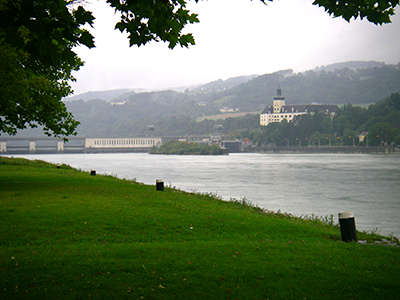
Schloss Persenbeug near the Kraftwerk Ybbs- Persenbeug.
Photo: Don & Maria Hitchcock 15th September 2008
From Maria's diary:
We crossed the river at the Kraftwerk Ybbs-Persenbeug, found a Baeckerei over the other side and stocked up with some food for the day. Then we continued around Ybbs and stopped on the southern edge of town when we passed a supermarket. Here we bought biscuits, perfume, muesli bars, elastoplast, bananas, milk and juice. Don found that he needed a litre of milk a day to keep him going. He took the photo of the liquor shelves with prices in the supermarket. Australians can't get over the cheap prices for liquor - ours is taxed very heavily. A 3 Euro bottle of wine would cost us the equivalent of 10 Euros.
All the shopping went into my basket in a large plastic bag secured and tucked under so that things wouldn't get wet or fly out if I hit a bump. The basket could get a bit heavy at times and occasionally I had a spill when everything tumbled out. This usually happened at corners trying to turn the front wheel 90 degrees. The bike would overbalance and fall over. It needed the two of us to lift it into an upright position again.
We continued on in the rain on the right bank to Sarling where we found a Cafe with Fred Flintstone - type furniture inside. The coffee and cake and shelter were very welcome. One thing we noticed in a lot of these places was the Stammtisch - a table reserved for locals who would meet to chat, eat and drink regularly. They were often older men speaking in dialect which I could barely understand.
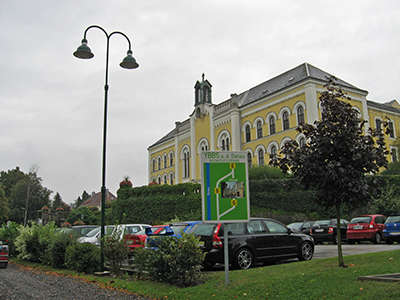
The Kuratotium für Psychosoziale Dienste at Ybbs an der Donau.
Photo: Don & Maria Hitchcock 15th September 2008
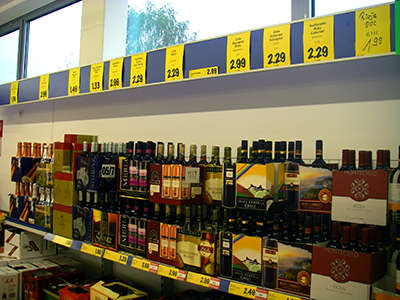
I was amazed at the low prices of wines in the supermarket. There were some bottles of Australian wines, mostly brands that we had never heard of, obviously made strictly for the export market.
Most of the display in this store was of wines from Chile.
Photo: Don & Maria Hitchcock 15th September 2008
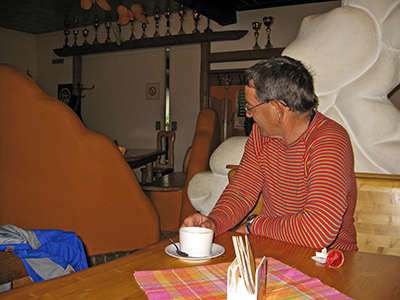
This was a strange place, somebody's folly, but the coffee and cake were good.
Photo: Don & Maria Hitchcock 15th September 2008
From Maria's diary:
We then rode past Krummnussbaum and Pöchlarn. It was flat and easy going on an excellent Treppelweg, passing fields of Canola. We crossed the river again at Pöchlarn on a bridge which had a wonderful spiral descent on the northern side.
It was raining fairly heavily again and we didn't want to stop as we'd set our sights on Willendorf and still had some way to go. We rode past Lehen and Sankt Georgen, past a ruin and a castle on the hill and followed the railway line and road to Aggsbach Markt.
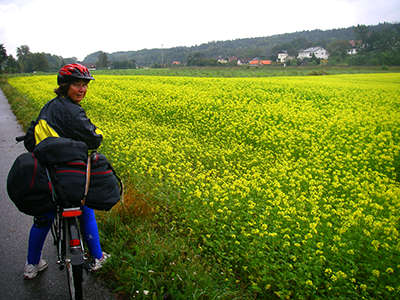
A field of Canola.
It is a cultivar of either rapeseed or field mustard/turnip rape. The seeds are crushed and edible oil is extracted. The waste, called canola meal, is used for animal feed.
Photo: Don & Maria Hitchcock 15th September 2008
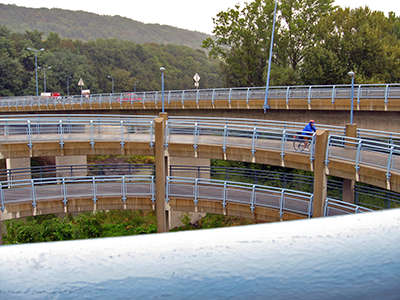
Starting down the spiral exit from the bridge.
Photo: Don & Maria Hitchcock 15th September 2008
And zooming around the curve!
We were now on the left bank.
Photo: Don & Maria Hitchcock 15th September 2008
Ruine Weitenegg.
The first mention of this castle is from 1108. It was an elongated multi-story complex with a Great Hall, two keeps, four courtyards, two kitchens, high chimneys, and surrounding walls.
In 1260 it was still owned by the Kuenringer, and in 1645 it was successfully defended against the Swedes. In 1738 it was owned by Baron Fürnberg and from 1800-1918 by the Habsburg-Lothringschen Family Fund. In 1870 large parts of the castle were demolished to use the material for the ultramarine factory at the foot of the castle rock.
Photo: Don & Maria Hitchcock 15th September 2008
Text: http://altemauern.heimat.eu/n_weitenegg.htm
Stift Melk, Melk Abbey, is a Benedictine abbey in Austria, and among the world's most famous monastic sites. It is located above the town of Melk on a rocky outcrop overlooking the Danube river in Lower Austria, adjoining the Wachau valley. The abbey contains the tomb of Saint Coloman of Stockerau and the remains of several members of the House of Babenberg, Austria's first ruling dynasty.
Photo (left): Don & Maria Hitchcock 15th September 2008
Photo (right): Zairon
Permission: Creative Commons Attribution-Share Alike 3.0 Unported license.
Text: Wikipedia
The signs in Austria were excellent.
Photo: Don & Maria Hitchcock 15th September 2008
Text: http://altemauern.heimat.eu/n_weitenegg.htm
From Maria's diary:
Finally we reached the outskirts of Willendorf at around 2.00 pm. Don had been waiting for this moment for such a long time as he had done a lot of research on the Venus of Willendorf, had reconstructed the figurine and wrote about it extensively on his archaeology website.
Along the road leading into the village we saw a Zimmer sign near a stand which allowed people to try some home-made liqueurs, which they could then buy from the owner. The house was below a rise so we made our way down and secured a room for the night.
I had spotted an ad for the Venus museum so we walked out later and checked it out. What a blow - it was now Monday and the museum was only open on the weekend. We went back to the house and asked the owner if it were possible to contact the curator and see if we could get in. We were in luck. The curator arranged to meet us at 3:30 pm.
The museum is a gem of a place and well worth visiting. We spent almost an hour photographing and reading the interpretation material then spent up big at the museum shop. After thanking the curator profusely, we walked up to the excavation site where the Venus figure was found and took more photographs. We had intended to eat at the local pub but it was closed so we contented ourselves with some leftover cake. We were getting very tired of the continual rain but the forecast showed no improvement in the weather
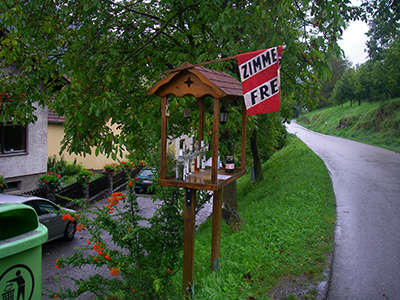
Zimmer frei.
Photo: Don & Maria Hitchcock 15th September 2008
The proprietor of the room we had rented made his own slivovitz from plums and other fruit.
Photo: Don & Maria Hitchcock 15th September 2008

We unpacked, had a hot shower, and put on dry clothes. It was good to be out of the rain in a warm and dry house.
Photo: Don & Maria Hitchcock 15th September 2008
Then I looked out the window, noticed a sign and my heart sank.
There was a sign advertising the Venusium, an excellent museum devoted to the site of the Willendorf Venus, the most well known venus figure in the world.
They were open on Saturdays and Sundays - and today was a Monday!
Photo: Don & Maria Hitchcock 15th September 2008
I talked to the Gasthaus proprietor, and he was very accommodating, and arranged for the volunteer to open the Venusium for us at 3:30.
While we waited for the man to come and open up the Venusium, we looked at the displays on the footpath opposite in the pouring rain. Readers might find the contact details for the Venusium useful if they are in the area.
Photo: Don & Maria Hitchcock 15th September 2008
The Venusium. It was well designed and beautifully presented.
Photo: Don & Maria Hitchcock 15th September 2008
Typical clothing of the reindeer hunters.
I have often thought that the typical 'warm fur' clothing, with the fur on the outside, is bad design. By putting the hide to the weather, it means that it can be impregnated with fat, and shed water. Designs can be painted on it with ochre, and the fur remains dry next to the wearer's skin, or a light undergarment of finer leather.
Fur on the outside would soon become wet and bedraggled, and cease to have good insulation when exposed to the elements, and would rub off when a pack is put on the back.
Photo: Don & Maria Hitchcock 15th September 2008
The recreation of the spear thrower, or atlatl, was very well made.
Photo: Don & Maria Hitchcock 15th September 2008
Close up of the bone point and the fletching of the dart of the reindeer hunter.
Photo: Don & Maria Hitchcock 15th September 2008
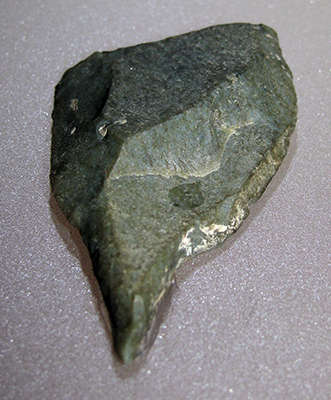
Tools of this type were either perçoirs (awls), used for punching holes in leather, or were attached to a wooden rod and used as drill bits. The drill was twirled between the hands to drill through bone or antler for tools, or to drill through shells for jewellery.
Photo: Don & Maria Hitchcock 15th September 2008
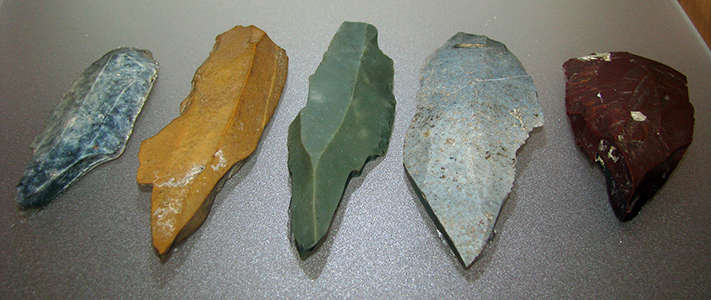
These are burins or engravers, used for cutting and shaping bone and antler.
Photo: Don & Maria Hitchcock 15th September 2008

These are scrapers, used for general smoothing and shaping of bone or antler or wood, or else for scraping hides to prepare them for clothing or other uses.
Photo: Don & Maria Hitchcock 15th September 2008
This is the venus statue at the site where the original statue was found.
Photo: Don & Maria Hitchcock 15th September 2008
The vulva is particularly well carved, by someone with a good knowledge of anatomy. The feet are rendered as very small, with no indication of ankles. Opinion is divided about the pattern around the head. Some say it is braided hair, others say it is a woven (or crocheted) hat pulled low over the face. There is evidence for woven textiles from that time. It could also be basketry.

Panoramic view from the site of the discovery of the Venus of Willendorf, Willendorf II. The Venusium museum is the red walled, dark tiled roof structure below the railway track on the right.
Photo: Don & Maria Hitchcock 15th September 2008
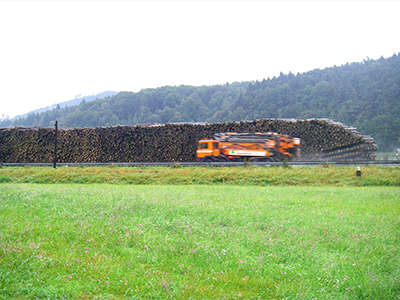

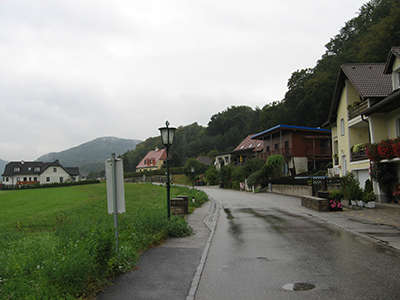
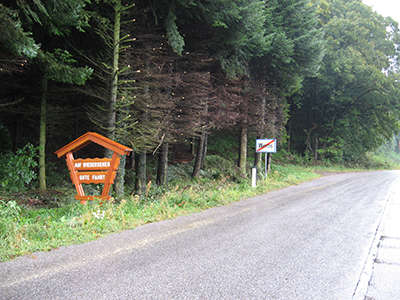

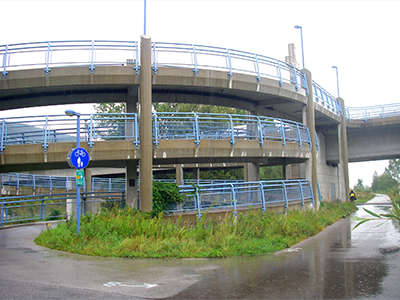
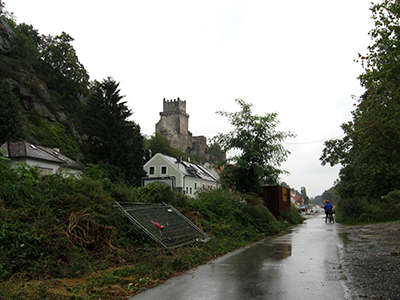
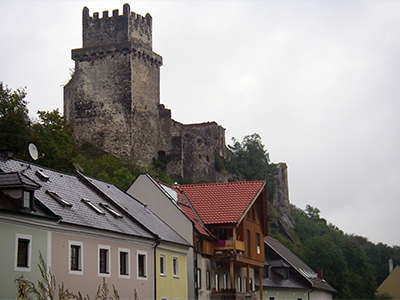
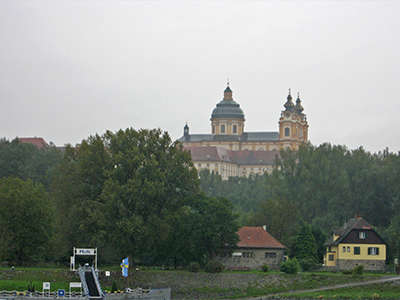
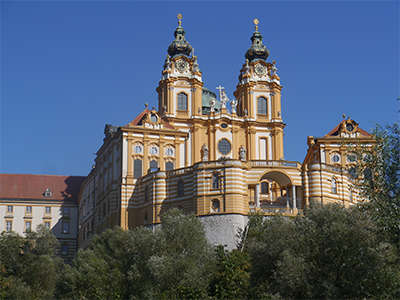
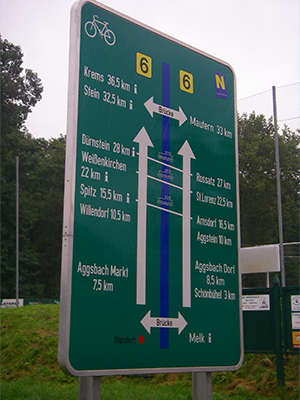
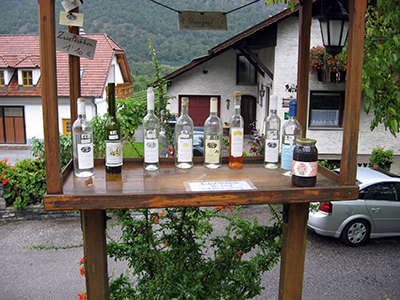
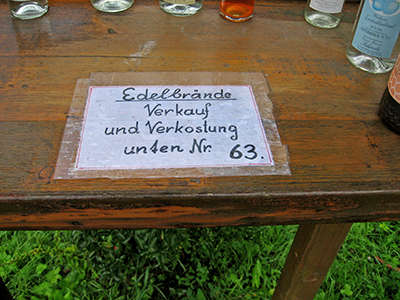

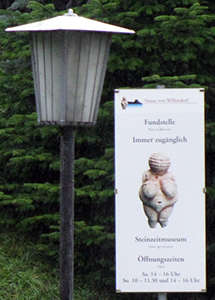
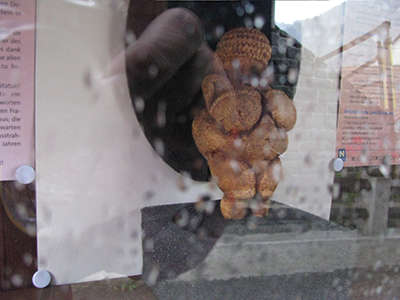

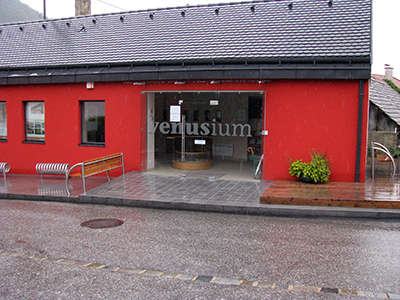
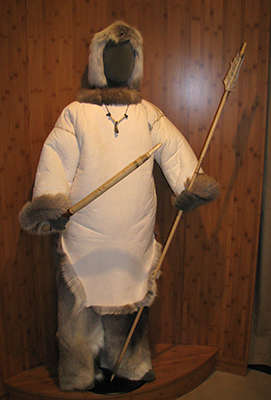

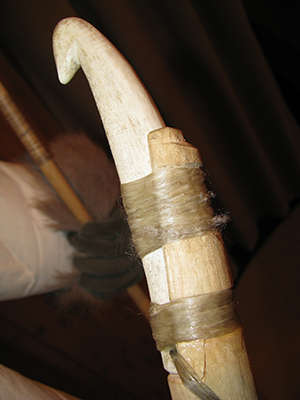

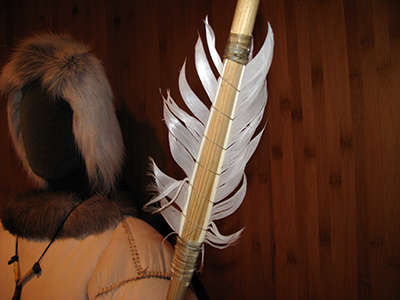
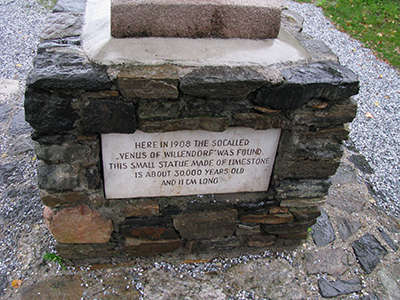
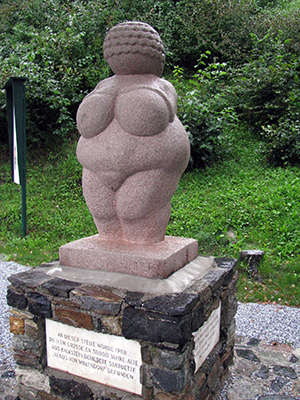
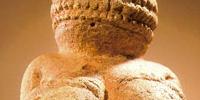 Willendorf Venus - The Venus of Willendorf, I, II and III. The Venus of Willendorf I is a superbly crafted sculpture of a naked obese woman from the stone age. It is made of oolitic limestone, and was covered with red ochre when found in 1908.
Willendorf Venus - The Venus of Willendorf, I, II and III. The Venus of Willendorf I is a superbly crafted sculpture of a naked obese woman from the stone age. It is made of oolitic limestone, and was covered with red ochre when found in 1908.